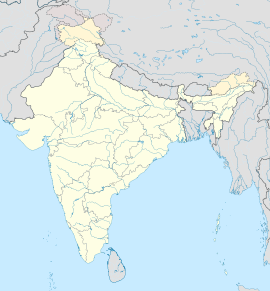Bhirrana
| भिर्दाना | |
| Alternate name | Birhana |
|---|---|
| Location | Haryana, India |
| Coordinates | 29°33′15″N 75°33′55″E / 29.55417°N 75.56528°ECoordinates: 29°33′15″N 75°33′55″E / 29.55417°N 75.56528°E |
| Type | Settlement |
| Length | 190 m (620 ft) |
| Width | 240 m (790 ft) |
| History | |
| Founded | Approximately 7570 BCE |
| Abandoned | Approximately 2600 BCE |
| Periods | Hakra Wares to Mature Harappan |
| Cultures | Indus Valley Civilization |
| Site notes | |
| Excavation dates | 2003-04, 2004–05, 2005-06 |
Bhirrana or Birhana is a small village located in Fatehabad District, in the Indian state of Haryana.
The site is situated about 220 km to the northwest of New Delhi on the New Delhi-Fazilka national highway and about 14 km northeast of the district headquarters on the Bhuna road in the Fatehabad district. The site is one of the many sites seen along the channels of the ancient Saraswati riverine systems, now represented by the seasonal Ghaggar River which flows in modern Haryana from Nahan to Sirsa.
The mound measures 190 m north-south and 240 m east-west and rises to a height of 5.50 m from the surrounding area of flat alluvial sottar plain.
The Excavation Branch-I, Nagpur of the Archaeological Survey of India excavated this site for three field seasons during 2003-04, 2004–05 and 2005-06. Several publications have been written on it by Rao et al.
According to Rao, Hakra Ware has been found at Bhirrana, and is pre-Harappan, dating to the 8th-7th century BCE. Hakra Ware culture is a material culture which is contemporaneous with the early Harappan Ravi phase culture (3300-2800 BCE) of the Indus Valley.
According to Dikshit and Rami, the estimation for the aniquity of Bhirrana is based on two calculations of charcoal samples, giving two dates of respectively 7570-7180 BCE, and 6689-6201 BCE.
According to Rao, the excavation has revealed these cultural periods; Period IA: Hakra Wares Culture, Period IB: Early Harappan Culture, Period IIA: Early Mature Harappan and Period IIB: Mature Harappan Culture.
Period IA: Hakra Wares Culture: The excavation has revealed the remains of the Harappan culture right from its nascent stage, i.e. Hakra Wares Culture (antedating the Known Early Harappan Culture in the subcontinent, also known as Kalibangan-I.) to a full-fledged Mature Harappan city. Prior to the excavation of Bhirrana, no Hakra Wares culture, predating the Early Harappan had been exposed in any Indian site. For the first time, the remains of this culture have been exposed at Bhirrana. This culture is characterised by structures in the form of subterranean dwelling pits, cut into the natural soil. The walls and floor of these pits were plastered with the yellowish alluvium of the Saraswati valley. The artefacts of this period comprised a copper bangle, a copper arrowhead, bangles of terracotta, beads of carnelian, lapis lazuli and steatite, bone point, stone saddle and quern. The pottery repertoire is very rich and the diagnostic wares of this period included Mud Applique Wares, Incised (Deep and Light), Tan/Chocolate Slipped Wares, Brown-on-Buff Wares, Bichrome Wares (Paintings on the exterior with black and white pigments), Black-on-Red Ware and plain red wares.
...
Wikipedia

